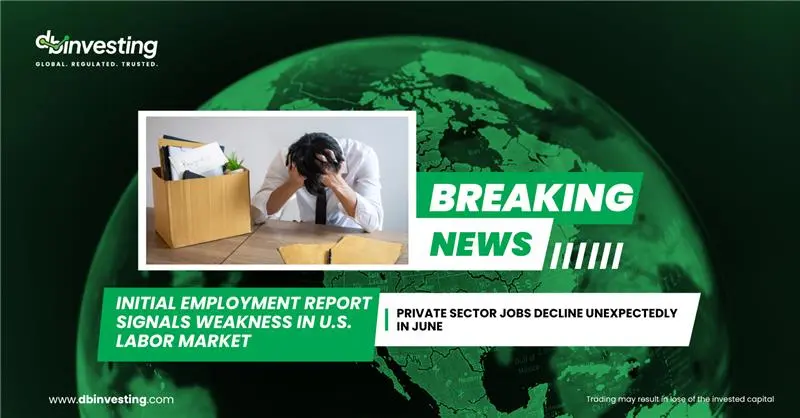Private Sector Jobs Decline Unexpectedly in June
Private sector employment in the United States fell by 33,000 jobs in June, significantly missing expectations of a 99,000 increase. This sharp miss highlights employer caution and worker reluctance to switch jobs amid growing uncertainty linked to US tariffs.
Revised May Figures
May’s employment data was also revised down to 29,000 jobs added, from the previously reported 37,000 — the smallest increase since March 2023.
Sector Performance
The ADP report, released on Wednesday, showed that the losses were concentrated in:
- Professional and business services: down 56,000 jobs
- Education and healthcare: down 52,000 jobs
- Financial activities: down 14,000 jobs
On the positive side, gains in leisure, hospitality, manufacturing, and mining helped limit the overall decline:
- Goods-producing industries added 32,000 jobs
- Total service-sector jobs fell by 66,000 jobs
Wage Growth Trends
Despite the hiring slowdown, layoffs remain rare, according to ADP Chief Economist Nela Richardson.
She emphasized that the cooling in employment has not yet disrupted wage growth.
Annual wage increases for workers staying in their current jobs remained steady. Job switchers saw a wage growth of 6.8% in June, slightly lower than the previous 7%.
Broader Labor Market Outlook
ADP’s figures typically don’t directly align with the official Non-Farm Payrolls (NFP) report, which is more closely watched by markets and is due Thursday.
Economists project the NFP report to show an addition of 110,000 to 120,000 jobs in June, with unemployment potentially rising to 4.3% from 4.2%.
Weekly jobless claims are also set to be released Thursday, expected to reach 240,000 new applications.
This data comes in a shortened trading week due to the US Independence Day holiday on July 4, with markets closing early on Thursday and fully closed on Friday.
Federal Reserve’s Approach
The Federal Reserve continues to focus on maximum employment and inflation control.
Chair Jerome Powell reiterated a wait-and-see stance on future interest rate changes, waiting for more clarity on the broader economic impact of the tariffs.
While Powell did not dismiss the possibility of a rate cut this year, he emphasized the need for patience.
📌 Conclusion
The unexpected drop in private sector jobs signals potential weaknesses in the US labor market, although wage growth remains stable.
All eyes now turn to Thursday’s official jobs report for confirmation of whether this is a short-term hiccup or a deeper labor market shift.

